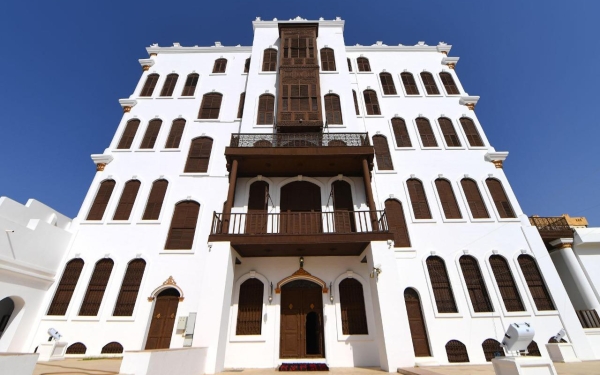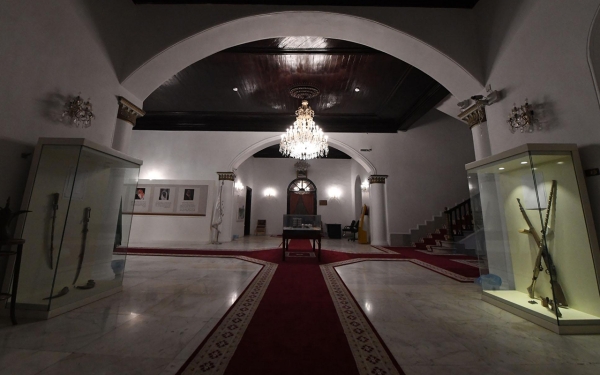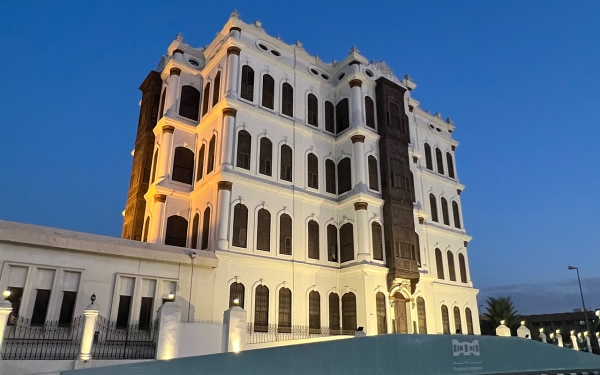



The historical Shubra Palace, also known as Taif Museum, is a museum and a historical and architectural landmark located in Taif Governorate within Makkah al-Mukarramah Province, west of the Kingdom of Saudi Arabia. Its construction began in 1904 and was completed within two years. It is considered one of the historical landmarks and royal palaces in Taif. Later, the palace was repurposed into a national cultural museum in 1995. It falls under the jurisdiction of the Ministry of Culture.
The construction of Shubra Palace in the city of Taif took two full years, involving the efforts of around two thousand workers. It was named after its design inspired by one of the palaces in the Shubra District in Cairo, Egypt. The palace comprises approximately 150 rooms and features two entrances: a main entrance on the western side, and a side entrance on the eastern side. It also has four similar facades, interspersed with columns made of lime mortar and stone. Inside its main hall, a double alabaster staircase leads to two suites located on the upper floor, each containing rooms of varying sizes. Its windows and doors are made of wood adorned with artistic touches.
The historical importance of Shubra Palace
The Founding King Abdulaziz Bin Abdulrahman Al Saud used the historical Shubra Palace from 1932 to 1953 as a summer residence for governance due to the mild rainy climate of the Taif Governorate in summer. It then served as the headquarters for the Council of Ministers and was the first headquarters for the Ministry of Defense and Aviation (currently the Ministry of Defense.)
The palace is externally adorned in white, and its architecture merges diverse styles. The Roman influence is evident in the palace's columns, featuring golden capitals. Meanwhile, the Hejazi architectural style is prominent in its dark wooden rawasheen decorated with Islamic motifs.
Components of the historical Shubra Palace
The historical Shubra Palace consists of four floors, along with an additional basement level, and includes external annexes and gardens. Its interior spaces were transformed into museum halls after it was repurposed into a regional museum in 1995.
The museum has an initial hall introducing the palace's history, followed by the Pre-Islamic hall, the Islamic era hall, the Kingdom's unification hall, Prince Sultan Bin Abdulaziz Al Saud's office when it was used as his summer residence, and the old market that documents the markets of the governorate and the Hejaz Region in the past.
Annexes of the historical Shubra Palace
The palace contains eight annexes to the building. The first annex consists of a single floor covering an area of 290 m². It includes a rectangular hall with an area of eighty-five m², another hall with multiple sides spanning fifty m², and an entrance leading to the main street. The second annex consists of a single floor used for museum displays, covering an area of 465 m². The third annex consists of a hall, four rooms, two bathrooms, and narrow corridors.
The fourth annex, consisting of a single floor with an area of 185 m², serves as a mosque. The fifth annex has an area of two hundred m² and consists of a single floor. It includes three-meter-wide corridors with ten rooms on both sides. Each room has an area of eight m. Additionally, the annex has a kitchen and two bathrooms and is used as an exhibition for folk crafts.
The sixth annex consists of two floors and serves as office spaces for the museum's staff. The seventh annex consists of two floors. The first floor is a workshop for artifact restoration, while the upper floor is used as a photography studio. The eighth annex consists of a basement used as a storage area, and two upper floors dedicated to the library.
Related quizzes
Related articles
